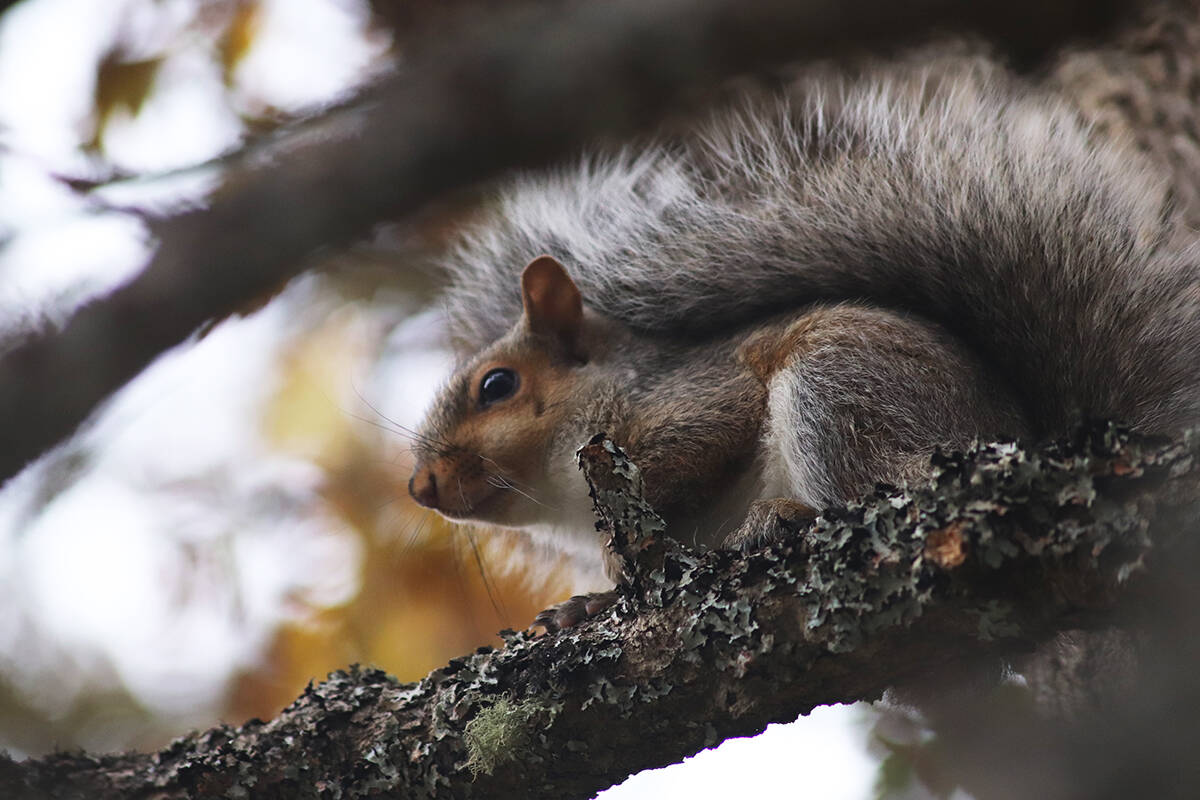Spring seems like the season of love, but canoodling comes earlier for a handful of furry critters prominent on the south coast of B.C.
Squirrels, raccoons and skunks are all looking for love, which means a bunch of noise, followed by nesting.
Mating season is February through March so all three species are on the hunt for a mate. Squirrels in particular get real chatty, says Trine From, Fraser Valley branch manager for pest control company Orkin Canada.
The females send out a pheromone that brings all the boys to the yard, and it’ll draw them from kilometres away, From said.
READ ALSO: Squirrels don’t need your nuts, thanks
Then the males compete for the female attention. The chittering can get noisy.
While desire to mate brings them out, the next phase – nesting – is where pest control comes in.
“Once mating season is over they disperse,” From said. “Same for raccoons, I’ve even seen them in my yard digging up my entire yard, same with the skunks.”
They’re looking for a place to have their young, and once they get in it’s noisy, messy and stinky.
None of the species are great tenants, From said.
“Once they’re in there and having their babies, we can’t get them back out again until the babies are strong enough or have gone,” she said.
When pressed, she’d say the squirrels are the worst. Any of them will get into an attic, or under a shed, but squirrels can get into tiny spaces or even set up house in a chimney.
READ ALSO: How to stop squirrels from driving you nuts this fall
Once inside they make a stink and a mess and residents will hear them fighting and chewing on things.
Pest control can’t remove them until the young are grown enough or gone. They can remove the critters if they pose a danger to humans.
Once removed, they’re relocated.
“It’s in our best interest to release them on the property we get them from. In the environment they’re familiar with,” From said. If it’s a raccoon deemed vicious or a skunk that keeps spraying, they’ll venture out 10 kilometres to release the animal.
Trapping can involve a one-way door installed where they gained entry, so the critters can leave but can’t get back into their makeshift den. There are other live traps used, with skunks getting their own special setup.
“You have to use special traps to capture them, because if you catch them in a regular say raccoon trap then a skunk is going to lift its tail and release those glands,” From said, noting technicians have been nailed in the past. “They’re cute but they stink.”
Residents can try and avoid the situation altogether by “excluding” wildlife.
READ ALSO: Victoria squeaks its way to 4th ‘rattiest’ city in B.C., 7th in Canada
“Anywhere there’s shelter and it’s vaguely warm they’re going to get in there,” From said, suggesting any hole larger than a dime should be sealed to eliminate mice and more.
The first line of defence is sealing every hole, but not using spray foam.
“Any pest that want to get into your home or shed will just chew through that spray foam and use it as nesting material.”
Similarly, simply sealing a hole under a shed won’t work.
“If you have a shed and the raccoons are under there, once you know for sure they’re gone, just sealing the hole they made isn’t going to help you,” the Orkin official explained. “They’ll just dig under.”
To remedy it, dig down two feet and install wire fencing around the perimeter.
From recommends a similar solution for beavers – except above ground. Orkin is called frequently for beavers taking down trees and the solution in that case is four feet of half-inch or quarter-inch mesh around the base of the trees.
“That’s something we offer, or if people want (they can) do it themselves,” she said.
As El Nino winter brings some unseasonably warm weather, From also reminds residents to use screen doors.
Raccoons in particular will just waltz right through an open door.

